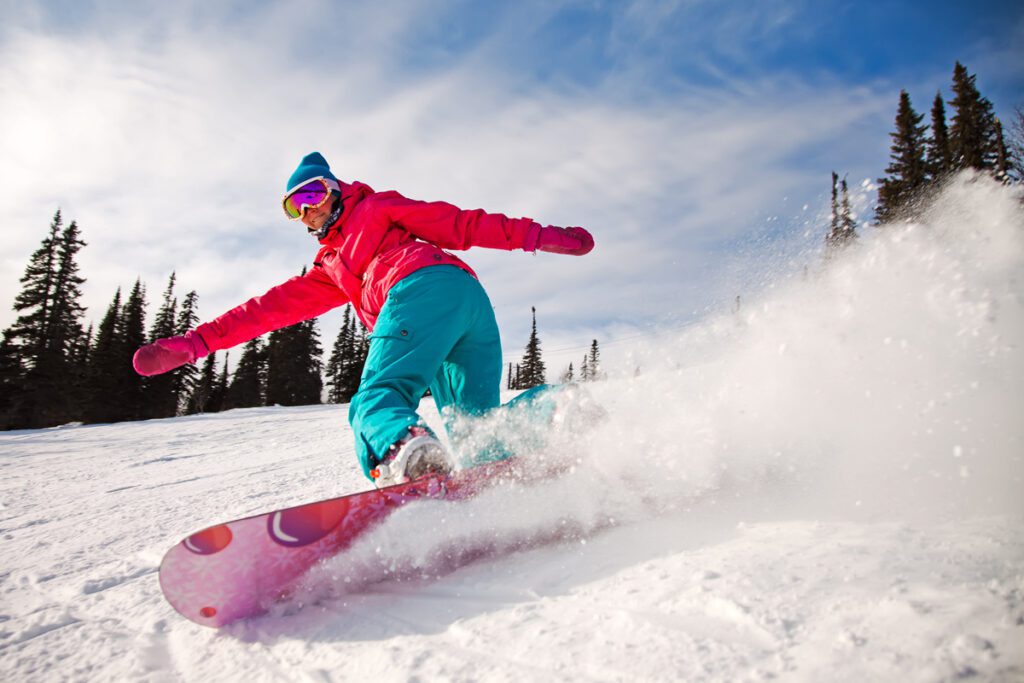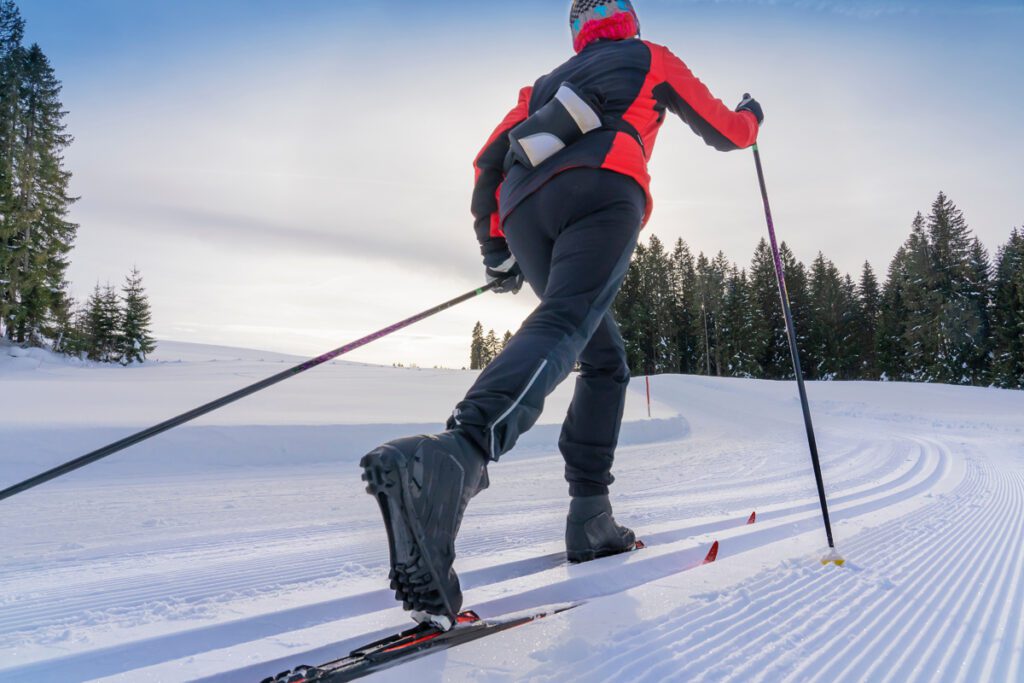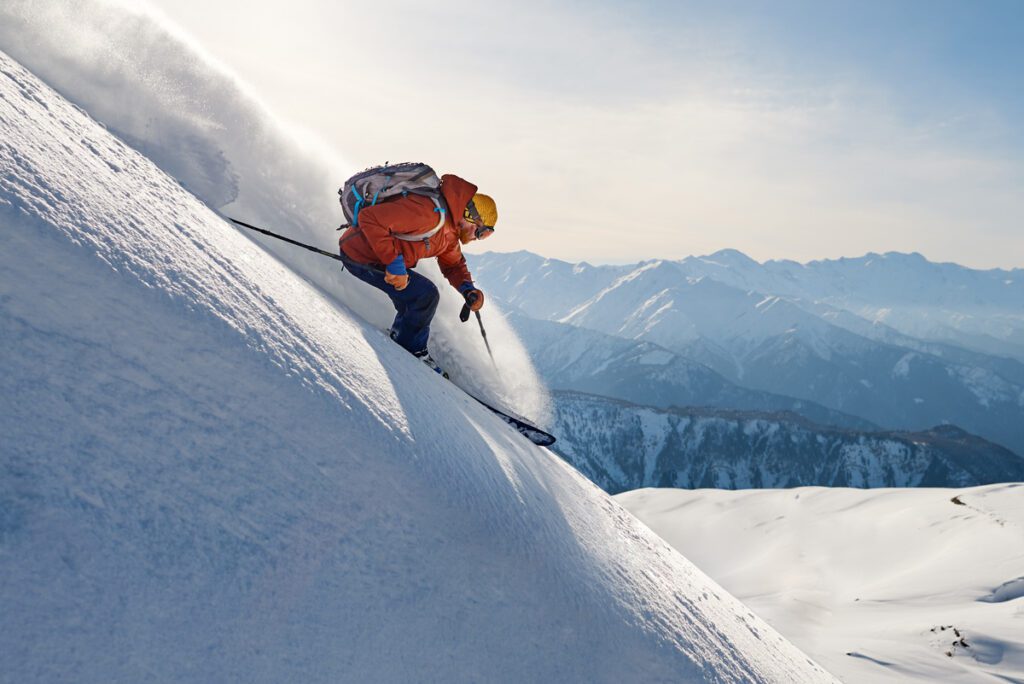Do This To Stay In Top Shape For Skiing And Snowboarding
Skiing and snowboarding bring a rush of excitement as you glide down powdery slopes, surrounded by breathtaking snow-covered landscapes. Whether you’re a seasoned pro or a beginner eager to take on the challenge, one thing remains clear: being physically prepared is the key to thoroughly enjoying these snow-centric sports. In this blog post, we’ll dive into essential tips to stay in shape for skiing and snowboarding.
Pre-Season Conditioning
As the days grow shorter and the first hints of winter chill the air, it’s time to start thinking about your pre-season conditioning. Waiting until the snow falls to begin training can lead to unnecessary strain and potential injuries. Instead, consider a proactive approach by engaging in a structured workout routine a few months before your ski or snowboard adventure.
Pre-season conditioning allows you to build the strength and endurance needed for the slopes gradually. Begin with a focus on general fitness, transitioning progressively to sport-specific exercises. A well-rounded routine might include cardiovascular activities like jogging, cycling, or swimming to improve overall endurance. It’s easier to stay in shape for skiing by having a year around plan.

Incorporate strength training exercises to address the specific muscles engaged in skiing and snowboarding. Leg presses, squats, lunges, and deadlifts will strengthen your lower body, while planks, Russian twists, and back extensions can enhance core stability. As you progress, gradually increase the intensity and resistance to mimic the demands of the slopes.
The beauty of pre-season conditioning lies in its ability to minimize the risk of injuries. By preparing your body beforehand, you’ll reduce the likelihood of muscle strains, sprains, and other injuries that can put a damper on your winter fun. Remember, consistency is key – stick to your routine and gradually build your fitness level to ensure you stay in shape for skiing and snowboarding.
Cardiovascular Fitness
When skiing down a mountain or carving through fresh powder on a snowboard, your cardiovascular system is tested. Maintaining a high level of cardiovascular fitness is essential to prevent early fatigue and ensure you can enjoy long days on the slopes without feeling drained.
Aerobic exercises play a significant role in improving your cardiovascular endurance. Activities like running, biking, and swimming are excellent choices to get your heart pumping and lungs working efficiently. However, don’t limit yourself to one type of exercise; variety can keep your routine exciting and target different muscle groups.
Consider incorporating interval training into your routine to replicate the varying intensities of skiing and snowboarding. Intervals involve alternating between high-intensity bursts and moderate-intensity recovery periods. This mirrors the stop-and-start nature of these winter sports, allowing your body to adapt to quick changes in effort levels.
As you work on your cardiovascular fitness, remember to increase the intensity and duration of your workouts gradually. This progressive approach helps your body adapt and improve over time. By focusing on cardiovascular endurance, you’ll be better equipped to tackle those long runs, steep descents, and challenging slopes with confidence and energy.
Strength Training
Strength is the backbone of skiing and snowboarding performance. The dynamic movements, sudden changes in terrain, and the need for precise control all rely on a foundation of strong muscles. Incorporating targeted strength exercises into your routine will aid your performance and help reduce the risk of injuries on the slopes.
The Role of Strength Training
Strong muscles provide the stability and power required for skiing and snowboarding maneuvers. Here’s how strength training contributes so you stay in shape for skiing:
- Lower Body Strength: Exercises like squats, lunges, leg presses, and calf raises strengthen the muscles in your legs, enabling you to navigate varied terrains and maintain balance.
- Core Stability: You need a strong core for maintaining balance, especially during quick turns and tricks. Planks, Russian twists, and stability ball exercises will help you build a solid core foundation.
- Upper Body Strength: While the focus is on the lower body, your upper body plays a role in maintaining posture and stability. Incorporate exercises like push-ups and rows to ensure overall body strength.
Designing Your Strength Training Routine
To create an effective strength training routine:
- Target Major Muscle Groups: Include exercises that target your quadriceps, hamstrings, glutes, core, and back muscles.
- Gradual Progression: Start with light weights and gradually increase the resistance. Go for for 2-3 sets of 10-15 repetitions for each exercise.
- Balanced Muscle Development: Work on maintaining the balance between muscle groups. Imbalances can lead to poor posture and increased injury risk.
- Rest and Recovery: Allow adequate time for your muscles to recover between strength training sessions. This promotes muscle growth and prevents overuse injuries.
Investing time in strength training will equip your body with the power and stability it needs for a confident and controlled skiing or snowboarding experience.

Balance and Stability
Skiing and snowboarding demand an extraordinary level of balance, and honing this skill can significantly improve your overall performance and enjoyment.
Importance of Balance and Stability
Balance and stability play key roles in various aspects of skiing and snowboarding:
- Controlled Turns: Staying balanced while turning is essential for smooth and controlled descents.
- Navigating Terrain: Whether on groomed runs or tackling challenging moguls, balance helps you adapt to varying terrains.
- Tricks and Jumps: Advanced maneuvers require exceptional balance to execute precisely and confidently.
Incorporating Balance-Enhancing Exercises
To enhance your balance and stability, include the following exercises in your routine:
- Yoga and Pilates: These practices focus on core strength, flexibility, and balance, making them ideal for ski and snowboard preparation.
- Stability Ball Exercises: Engage your core and challenge your stability with planks and squats on a stability ball.
- Single-Leg Exercises: Perform single-leg squats, lunges, and leg raises to improve balance and address muscle imbalances.
- Mind-Muscle Connection: During these exercises, pay attention to the muscles you’re engaging and the sensation of balance. This mindfulness will translate to better control on the slopes.
- Consistency and Patience: Balance and stability take time to improve. Consistent practice will lead to significant improvements in your on-mountain performance.
By dedicating time to balance-enhancing exercises, you’ll find yourself gliding down the slopes with increased confidence, control, and grace. Your mastery of balance will be the secret to conquering challenges and enjoying every moment on the mountain.
Flexibility and Mobility
When it comes to skiing and snowboarding, flexibility and mobility are more than just nice-to-haves – they’re crucial to your performance. The dynamic movements and varied terrain demand a body that can adapt quickly and move fluidly. By prioritizing flexibility and mobility, you’ll enhance your range of motion and help minimize the risk of strains and injuries.
The Importance of Flexibility and Mobility
Flexible muscles and joints allow for smoother, more controlled movements. Here’s why flexibility matters:
- Effortless Turns: A flexible body can transition seamlessly between turns, reducing the strain on your muscles and joints.
- Responsive Adaptation: Flexible joints enable quick adjustments to changing terrains and unexpected obstacles.
- Injury Prevention: Flexible muscles are less likely to tear or strain during sudden movements or falls.
Incorporating Dynamic Stretches and Mobility
To improve flexibility and mobility, integrate dynamic stretches and mobility exercises into your routine:
- Dynamic Stretches: Leg swings, arm circles, and hip rotations help warm up your muscles and improve their elasticity.
- Foam Rolling: This self-myofascial release technique can alleviate muscle tightness and improve flexibility.
- Yoga or Pilates: These practices enhance flexibility and promote balance and core strength.
- Consistency is Key: Flexibility and mobility require ongoing attention. Dedicate time to stretching and mobility exercises regularly to maintain progress.

Injury Prevention
Skiing and snowboarding offer exhilarating thrills, but they also come with the risk of injuries. Following safety guidelines and practicing proper technique can significantly reduce the risk of common skiing and snowboarding injuries.
Common Winter Sports Injuries
Understanding potential risks can help you take proactive measures to avoid injuries:
- ACL Tears: Twisting motions and sudden stops can strain the knee’s anterior cruciate ligament (ACL).
- Fractures: Falls and collisions can lead to bone fractures, particularly in the wrist, collarbone, and ankle.
- Strains and Sprains: Muscles and ligaments can become strained or sprained due to overexertion or sudden movements.
Preventing Injuries
Here’s how to protect yourself on the slopes:
- Proper Gear: Wear appropriate gear, including helmets, wrist guards, and knee pads. These items offer crucial protection in case of falls.
- Warm-Up and Cool-Down: Always warm up before hitting the slopes to increase blood flow to your muscles. After your session, cool down with stretches to prevent muscle tightness.
- Know Your Limits: Avoid attempting maneuvers beyond your skill level. Progress gradually to more challenging terrains and tricks.
- Proper Technique: Take lessons to learn proper skiing and snowboarding techniques. Good form reduces the risk of injury.
- Be Alert: Keep aware of your surroundings and the actions of others on the slopes. Avoid distractions and maintain control.
- Listen to Your Body: If you experience pain or discomfort, don’t ignore it. Take breaks and rest when needed to prevent overexertion.
Prioritizing safety on the slopes not only protects you but also ensures that you’ll be able to enjoy skiing and snowboarding for years to come. Adopting preventive measures will significantly reduce the risk of injuries and make your winter sports experience as safe as it is exhilarating.
Summary
Staying in top shape for skiing and snowboarding encompasses more than just physical training – it’s a holistic approach that integrates fitness, nutrition, mental readiness, and injury prevention. From the moment you set foot on the slopes, your body and mind work together to conquer challenges and embrace the thrill of these winter sports.
By understanding the physical demands, engaging in pre-season conditioning, prioritizing cardiovascular fitness, building strength and stability, enhancing flexibility, and nourishing your body with proper nutrition, you’re equipping yourself with the tools for success. Additionally, mental preparation, injury prevention, rest, and self-awareness contribute to a well-rounded approach that maximizes enjoyment and safety.
As you set out on your skiing and snowboarding adventures, remember that each day on the slopes is an opportunity to learn, grow, and appreciate the beauty of the winter landscape. Embrace the journey, take care of your body, and relish the exhilaration of gliding down the mountainside. Your commitment to staying in top shape will ensure that every winter season has unforgettable moments and lasting memories.